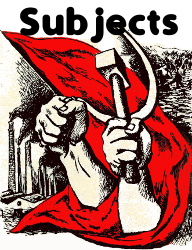




|
The
Soldier of La Ciotat
After the First World War, during a fête to celebrate the launching of a ship in the small port town of La Ciotat in the South of France, we saw in a public square the bronze statue of a French soldier with a crowd pressing round it. We went closer and found that it was a living man standing there in a dun-coloured greatcoat, a tin hat on his head, his bayonet fixed, motionless on a plinth in the hot June sun. His face and hands were coated with bronze paint. He did not move a muscle, not even his eyelashes flickered. At his feet a piece of cardboard was propped against the plinth with the following legend: Human Statue
(L'Homme Statue) I, Charles Louis Franchard, private in the -th regiment, as a result of being buried alive at Verdun, have acquired the unusual faculty of remaining completely motionless and comporting myself for any length of time like a statue. This skill of mine has been tested by many professors and described as an inexplicable disease. Please contribute a small donation to the unemployed father of a family. We threw a coin into the plate which stood by the placard and walked away, shaking our heads. So here he stands, we thought, armed to the teeth, the indestructible soldier of the long millennia, he with whom history was made, he who enabled Alexander, Caesar and Napoleon to perform those great deeds of which we read in school text-books. This is he. He does not flicker an eyelash. This is Cyrus' archer, Cambyses' scythe-wheeled charioteer whom the sands of the desert could not bury for all eternity, Caesar's legionary, Jenghis Khan's mounted lancer, Louis XIV's Swiss Guard, Napoleon I's grenadier. His is the faculty - not, after all, so unusual - of not betraying his feelings when every conceivable instrument of destruction is tried out on him. He remains (he says) like a stone, without feeling, when he is sent to his death. Pierced by spears of every possible age - stone, bronze, iron - mown down by the chariots of war, those of Artaxerxes and those of General Ludendorff, trampled underfoot by Hannibal's elephants and Attila's horsemen, smashed to pieces by flying metal from the ever-improved guns of many centuries, though also by flying stones from catapults, riddled by rifle bullets, as big as pigeons' eggs, as small as bees, he stands, indestructible, ever commanded anew in diverse tongues, but never knowing why or wherefore. It was not he who took possession of the lands he conquered, just as the mason does not live in the house he has built. Nor, indeed, did the territory he defended belong to him. Not even his weapon or his equipment belongs to him. But he stands under the rain of death from aircraft and burning pitch from city walls, mine and pitfall beneath his feet, pestilence and mustard gas around him, flesh-and- blood bait for javelin and arrow, target, tank pulp, gas inhaler, the enemy in front of him and the General behind. The untold hands that wove the jacket, forged the armour, cut the boots for him! The untold pockets that were filled by him! The immeasurable clamour in every language in the world that urged him on! No god who did not bless him. He who is afflicted by the hideous leprosy of patience, sapped by the incurable disease of imperviousness. What sort of burying alive is this, we thought, to which he owes this disease, this frightful, monstrous, supremely infectious disease? Might it not, we asked ourselves, be curable after all? |